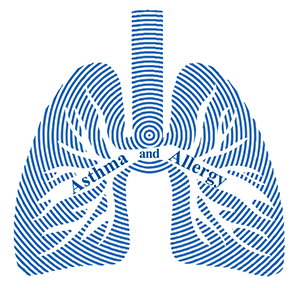Contact Dermatitis, Eczema and Patch Testing
Cosmetic Allergy, Fragrance Allergy, Acrylic Allergy, Nickel & Metal Allergy, Industrial Chemical Allergy
Allergies can be caused by four different mechanisms. Two of them will be discussed here.
A) Diseases such as Asthma, Sinus, Hives and Anaphylaxis are caused by IgE mechanism. Food allergy symptoms such as itching / swelling of mouth, tongue and throat are also IgE mediated. This is called IMMEDIATE ALLERGY, as it starts within a few minutes after exposure the allergen. The reaction wears off within 1 to 24 hours unless there is recurrent or ongoing exposure to the allergen, which is often the case. Skin Prick tests and RAST blood tests are used to test for this allergy.
B) On the other hand Eczema, Contact Dermatitis, Chronic Itchy Dermatitis, Nickel Allergy, Allergy to Poison Ivy and many chemicals (such as cosmetics, fragrances, acrylics etc.) are caused by T cells. Also called DELAYED HYPERSENSITIVITY, this type of reaction starts many hours after the contact, has much longer duration, taking up to a few weeks to wear off, and often becomes chronic on repeated or persistent exposure. This type of allergy to metals, glues and antibiotics used in surgical implants, such as hip and knee joint replacements (details here), are responsible for a lot of postoperative problems.
CONTACT DERMATITIS
The term means inflammation of the skin caused by contact with a chemical substance. This can happen if the substance is an irritant such as an acid or bleach. Given long enough exposure at high enough concentration, everyone will get the inflammation called IRRITANT CONTACT DERMATITIS.
In contrast, ALLERGIC CONTACT DERMATITIS occurs only if a person develops T cell allergy to the chemical in contact with the skin. Since it is a delayed onset chronic reaction, it is often not quite obvious as to what is causing the rash.
PATCH TESTS are done to identify the chemicals your T cells are allergic to.This helps you identify and avoid contact with products that may contain those chemicals.
Food Allergies, when they are responsible for Atopic Dermatitis, Eczema, Eosinophilic Esophagitis, Irritable Bowel Syndrome (IBS), and Eosinophilic Gastro-Intestinal Disease (EGID), often affect patients through both abovementioned mechanisms. Food Allergy patients need both Prick and Patch Tests for the suspected foods.
How Is Contact Dermatitis Patch Testing Performed?
Patch tests are done using the standard antigen list prepared and recommended by the Contact Dermatitis Experts for patients living in North America, after reviewing extensive data. The list contains 80 commonest antigens North Americans are likely to be allergic to.
Visit 1: During the initial visit the patch test panels will be placed on the back. These panels consist of suspected chemicals in a neutral base, filled in small plastic chambers. The panels are taped to the skin. These panels must remain in contact with the skin for 48 hours, unless there is pain or severe itching. This requires that they do not get wet or shift their location on the back. So no bath and no sweaty exercise is allowed until after your second visit.
Visit 2: 48 – 72 hours after patch placement. Panels are removed, first readings are recorded. After this visit you can have a shower but do not soap the back and be very gentle with the towel so you do not rub off the ink markings. They are required for reading on the third visit.
Visit 3: 4 to 7 days after patch placement, the tests are read again and the results discussed.
